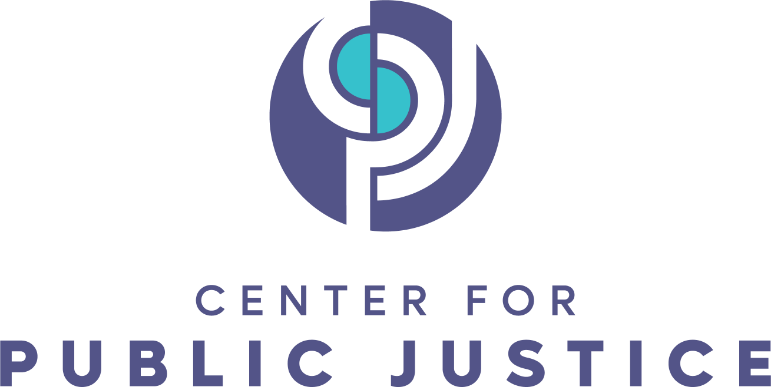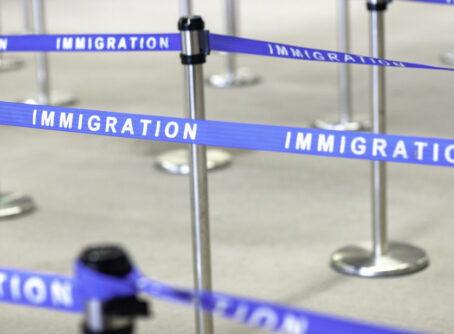
This article is part of Shared Justice’s Second Chance Month series running throughout April and May. This series will explore barriers that returning citizens face upon release from prison, highlight the ways in which government and civil society institutions can respond, and invite our readers to participate in efforts to ensure that returning citizens have the ability to flourish upon reentering society.
In a span of three months, the Supreme Court was confronted with two cases of religious freedom on death row – and made almost opposite decisions. Exactly what this means for the current state of First Amendment protections is unclear.
In February, Domineque Ray, a Muslim man, was told by Alabama prison officials that only a trained Christian chaplain would be allowed into his execution chamber; his imam would not. Ray appealed to the Supreme Court but was unsuccessful. The court majority, citing precedent that allowed them to “consider the last-minute nature of an application to stay execution in deciding whether to grant equitable relief,” deemed his complaints untimely and gave a pass for the execution. Ray was killed on Feb. 7 without any spiritual advisor by his side.
The court’s decision in Dunn v. Ray was widely criticized on bipartisan lines. Both liberals and religious conservatives objected to the prison’s policy, which they claimed favors Christians and is therefore a violation of the Establishment Clause. They accused the court majority of sidestepping the issue by focusing on an irrelevant technicality.
On March 5, at a Texas prison with policies similar to those of Ray’s, officials told the condemned Patrick Murphy that he would not be allowed to bring his Buddhist priest into his execution chamber. On March 26, two days before his execution date, Murphy filed a complaint. This time the Supreme Court granted a stay. The majority has released no explanation for their decision. Justice Brett Kavanaugh, however, in his independent concurring opinion, has stated that he voted in favor of Murphy because he believes the prison was committing a religious freedom violation. In his own words,
Texas policy allows a Christian or Muslim inmate to have a state-employed Christian or Muslim religious adviser present … in the execution room. But inmates of other religious denominations … can have the religious adviser present only in the viewing room and not in the execution room itself for their executions. In my view, the Constitution prohibits such denominational discrimination.
Why did Kavanaugh and other justices who voted against Ray take the opposite stance in Murphy v. Collier? Based on the limited evidence that we have – a footnote of Kavanaugh’s that says, “Murphy made his request to the State in a sufficiently timely manner, one month before the scheduled execution” – it appears they are sticking to the timing argument.
As Amanda Taylor from the Religion News Service points out, however, the court’s stance is weak. Ray asked for his imam to be present at his death on Jan. 23 and filed a complaint on Jan. 28, nine days before his execution date. In comparison, Murphy asked for his priest to be present at his death on Feb. 21 but did not file his complaint until March 26, only two days before his execution date. Both Ray and Murphy waited until they had only a few days left to make their official petitions. Why does the Supreme Court consider Ray’s behavior untimely and not Murphy’s? After all, as the Texas district court argued in its ruling, prison policy was even more transparent for Murphy than it was for Ray, and yet he waited even longer to file a complaint. The fact that Murphy made his initial request earlier than Ray did does not feel convincing. If Ray’s petition was denied because he, in the words of the Alabama district court, “had ample opportunity in the past twelve years to seek a religious exemption,” then Murphy’s should by all rights have been denied, too.
The truth is, the timing argument was poor to begin with. According to the Brookings Institute’s Richard Lempert, despite his district court’s ruling, “there was no judicially noticeable evidence that Ray knew the details of Alabama’s execution protocol until a few days before his objection to this procedure was made.” Moreover, even if the judges did interpret his behavior as a form of intentional stalling (as was the case in the Gomez lawsuit cited as precedent in Dunn v. Ray), Lempert argues that they ought to have given him the benefit of the doubt given the serious First Amendment nature of the case.
Lempert believes the Supreme Court justices who sided against Ray may have done so out of a desire to respect precedent and federalism. The fact that a majority has now sided with Murphy hints that their convictions are not too dear to be influenced by public opinion. Amanda Taylor believes Murphy v. Collier went the way it did because of the backlash the court received after Dunn v. Ray:
The traditional view has been that these nine jurists are insulated from pressure, but I think that is exactly what was applied by [Justice Elena] Kagan in her strong dissent and by religious liberty advocates in their resounding rejection of the court’s decision in Dunn v. Ray. I predict that we will look back on this pair of decisions as a case study in the power of advocacy, both within and outside the court.
In one sense, this might be good news for faith-based organizations (FBOs), which were among Dunn v. Ray’s critics. The sacred sector has historically been undervalued and rarely on the radar of America’s media and political elite. If it now has the power to exert leverage on the Supreme Court, perhaps the country will begin to treat churches and religious nonprofits as the important institutions of civil society that they are. Moreover, the fact that the court seems to now have a greater concern for the First Amendment might mean that the institutional religious freedom of FBOs will be better protected in future lawsuits.
On the other hand, the Supreme Court’s flip-flop shows a worrisome level of deference to public opinion. The justices are appointed rather than voted in and given life tenure rather than term limits with the explicit purpose of protecting them from outside pressure. Ideally, they should exhibit a grounded, principled support of the First Amendment freedoms. One that depends on public opinion is liable to change just as soon as public opinion does. Religious freedom – the ability to live all aspects of one’s life in accord with one’s conscience and sacred beliefs – is perhaps the most basic right enumerated in the Constitution, fundamental to what it means to be human. Its legal protections should not be in flux every few months.
Collin Slowey is an intern with the Center for Public Justice and a political science student at Baylor University.






